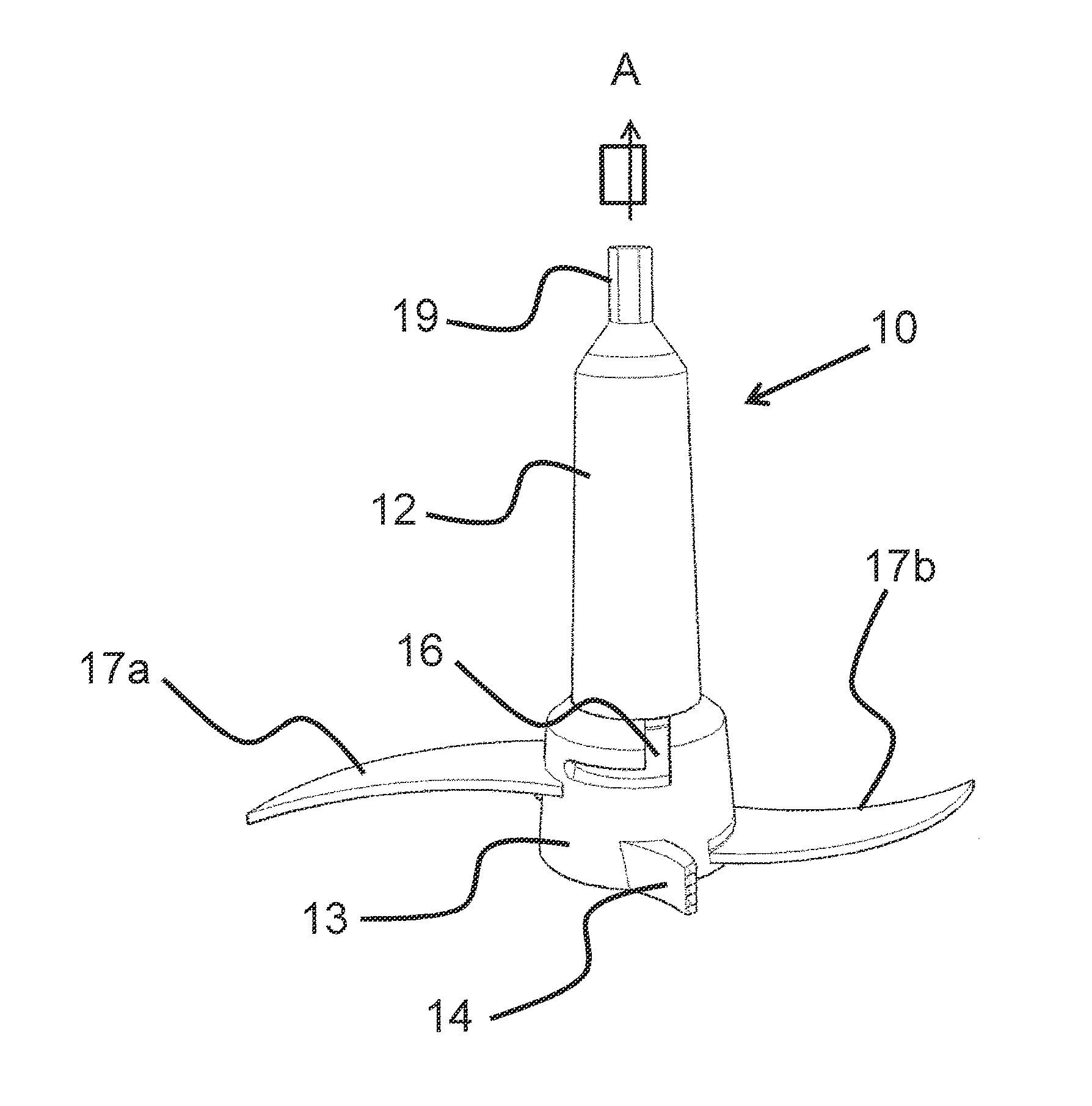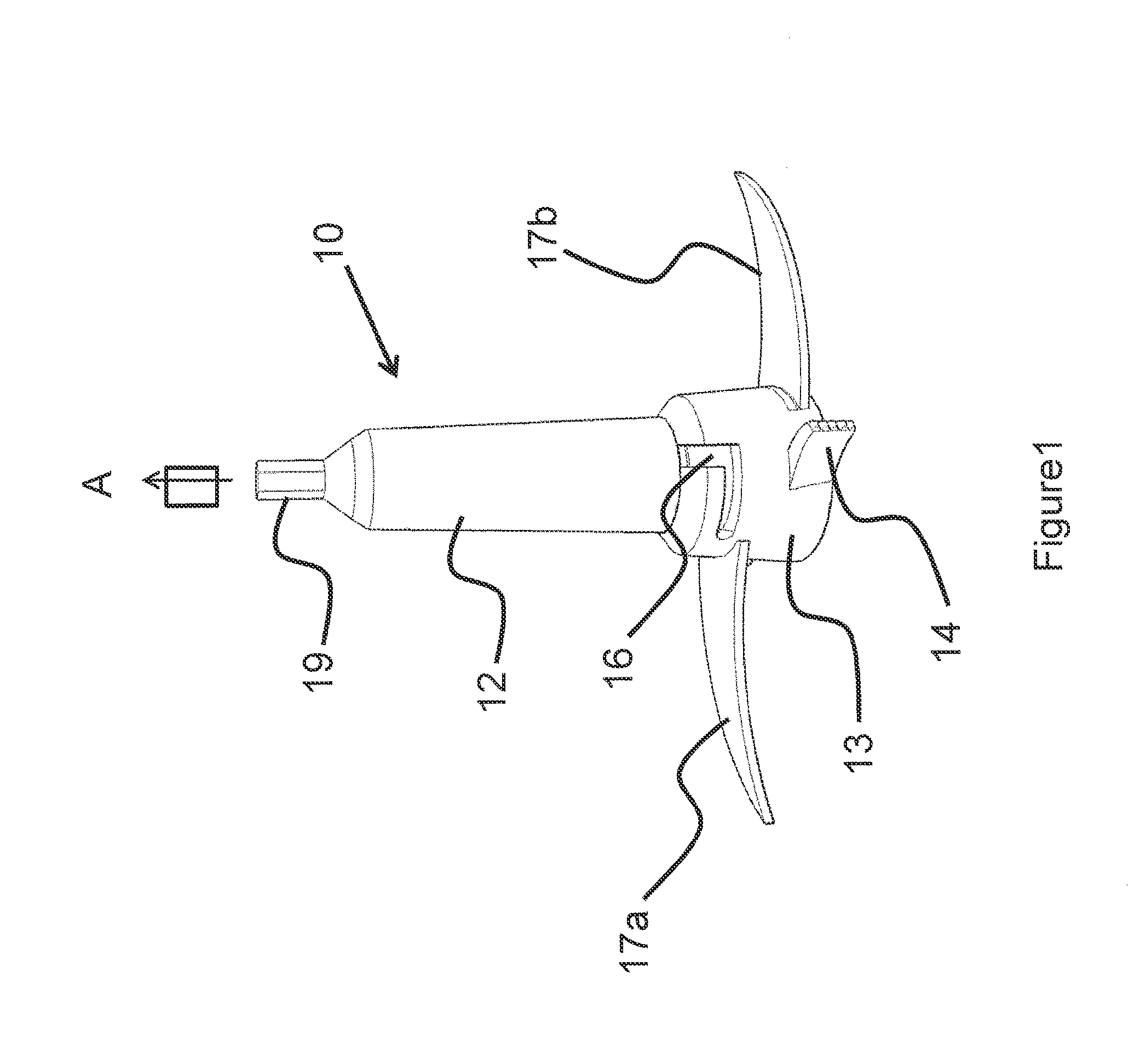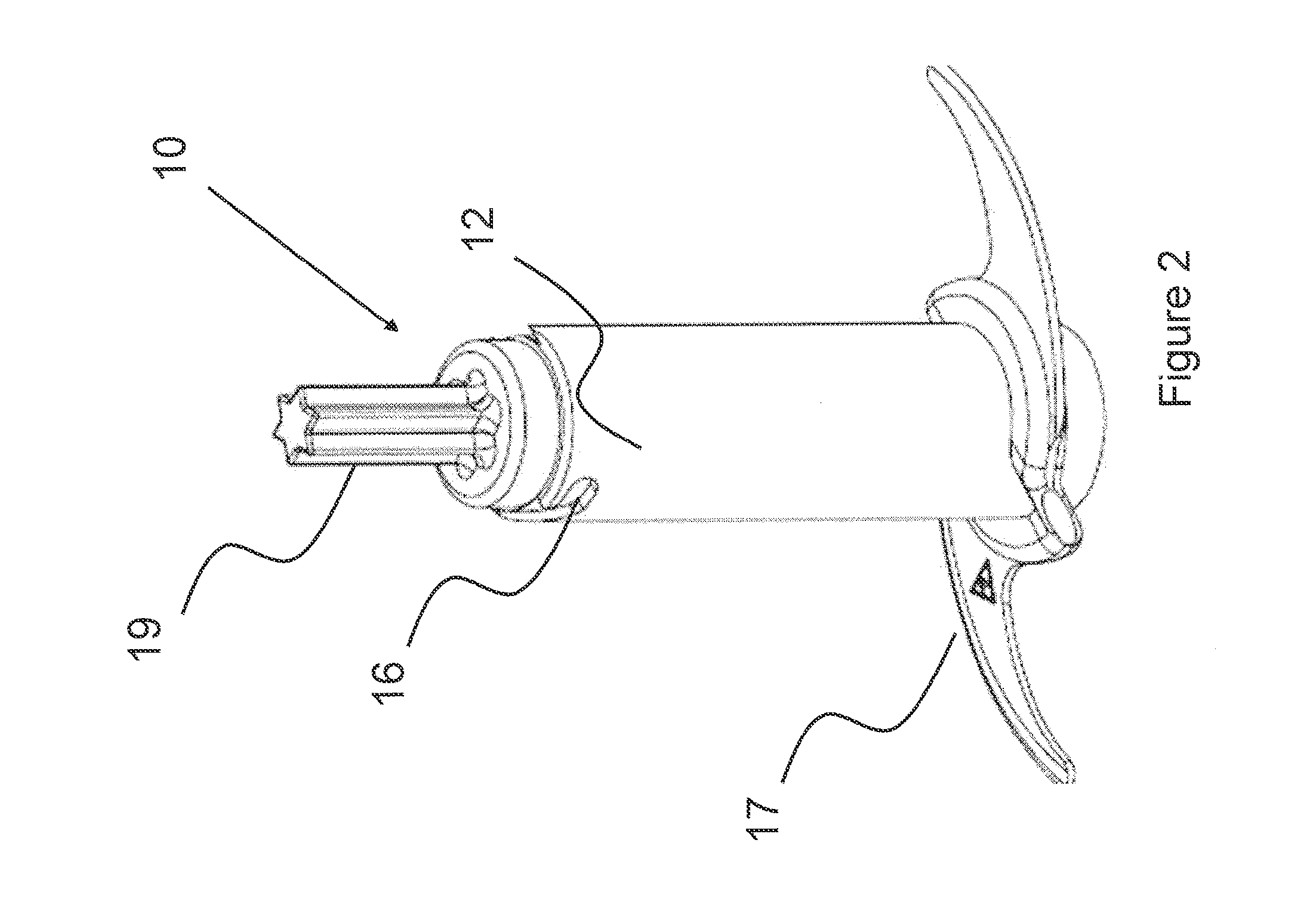Universal blades and accessories for food processors
a technology of food processors and blades, applied in the field of universal blades and accessories for food processors, can solve the problems of affecting the quality of food preparation, so as to prevent excessive lifting of accessories and increase the lift
- Summary
- Abstract
- Description
- Claims
- Application Information
AI Technical Summary
Benefits of technology
Problems solved by technology
Method used
Image
Examples
embodiment 10
[0062]Reference is now made to FIG. 2 illustrating another central utensil 10 that is capable of being fitted in a food processor in accordance with some embodiments. The utensil 10 includes the following parts: a shaft 12 with a spindle 19, a base 13, slot 16, and cutting blade pair 17. However, note that in contrast to the other embodiment 10 illustrated in FIG. 1, this central utensil 10 lacks paddle elements.
[0063]FIG. 3 illustrates a cutting, stirring and whisking accessory 20 capable of being secured to a central utensil such as the utensil 10, shown in FIG. 2, in accordance with some embodiments.
[0064]Accessory 20 includes a cylindrically shaped body 22 with an opening 23, a pair of wings 24a, a pair of paddles 24b and a locking key 21.
[0065]Opening 23 is preferably configured to snugly fit the accessory20 onto shaft 12. In addition, the locking key 21 is configured to engage slot 16 such that the accessory 20 is secured to the central utensil 10.
[0066]Wings 24a may be config...
embodiment 400
[0106]FIG. 8a illustrates a food processing utensil embodiment 400 wherein some of the blades have teeth 471, 472 and flaps 480, and FIG. 8b shows an expanded view of a blade 427cβ with a flap 480.
[0107]The teeth 471 are readily apparent in the top pair of blades 427aα, 427aβ but there are teeth 472 also on the bottom pair of blades 427dα, 427dβ.
[0108]The embodiment 400 fits into a food processor for concomitantly stirring, whipping and chopping food preparations, the food processor (not shown) comprises: a correspondent motor, a correspondent bowl with a bottom and walls, and a food processing utensil, the food processing utensil 400 includes an accessory 420, which has two paddles (only 424bα visible); two wings 424aα, 424aβ; top cutting blades 427aα, 427aβ; cutting blades 427bα, 427bβ, 427cα, 427cβ. The central utensil 410 onto which the accessory 420 is threaded includes cutting blades 427dα, 427dβ.
[0109]The paddles 424b, blades 427 and wings 424a are coupled to the central ut...
PUM
 Login to View More
Login to View More Abstract
Description
Claims
Application Information
 Login to View More
Login to View More - R&D
- Intellectual Property
- Life Sciences
- Materials
- Tech Scout
- Unparalleled Data Quality
- Higher Quality Content
- 60% Fewer Hallucinations
Browse by: Latest US Patents, China's latest patents, Technical Efficacy Thesaurus, Application Domain, Technology Topic, Popular Technical Reports.
© 2025 PatSnap. All rights reserved.Legal|Privacy policy|Modern Slavery Act Transparency Statement|Sitemap|About US| Contact US: help@patsnap.com



